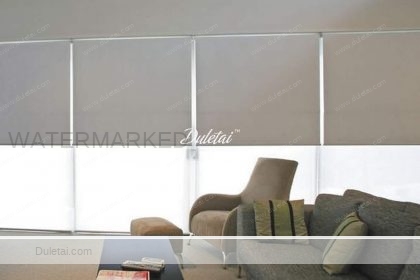
Views: 12
Due to much advancement in solar optical technologies and testing, there is now more information about sunscreen shadecloths than ever before. Information that is useful in determining one of the more pressing questions when deciding on a shadecloth: polyester vs. fiberglass. The following is a report on how polyester core fabric and fiberglass core fabric compare in quality, durability, and fit-for-use. Based on our prior history with fiberglass core, our subsequent experience with polyester core, and test results from independent lab tests, we find that despite its traditional strengths in other products, fiberglass does not match the quality and performance of polyester as a sunscreen.
There are similarities in the polyester and fiberglass yarns. Both types of fabric are coated with vinyl, so the emissivity is virtually identical. Polyester core yarns are extrusion-coated, while fiberglass yarns are dip-coated. Both end up as vinyl-coated yarns woven into a solar shadecloth on a standard loom. The woven shadecloth is then cured under heat and pressure. This process seals in the yarns and creates a non-raveling shadecloth suitable for roller screens. Both fiberglass and polyester core fabrics meet the UK, US, and Canadian fire resistance codes for window coverings.
The major difference between polyester and fiberglass shadecloths is in the strength and durability of their core yarns. For all physical property tests (Grab Tensile Strength, Tearing Strength, Ball Burst Strength, and Abrasion Resistance) polyester core fabric was superior. This can be attributed to the polyester core and a high-quality plasticizer, the same type used on radial tires. This plasticizer also provides excellent resistance to fading, abrasion, mildew, rot, and chemicals. Even when produced in light colors, polyester core will not yellow as opposed to light-colored fiberglass core.
The polyester core construction tends to be more dimensionally stable, performing better in all construction tests. In the Stretch and Recovery Test, polyester core shades retain their original shape and form, particularly if the shades are quite large. The thermoplastic matrix of polyester and vinyl allows a sealed-cut edge, with a protective bead, which is not possible with a fiberglass and vinyl screen cloth. The fiberglass is inert and will not bind to the vinyl coating. Thus fiberglass core gets distorted and does not retain its original shape.
Fiberglass yarn consists of very fine and short-staple fibers. To manufacture these at a given density, it requires the inclusion of far more threads than a Polyester Core screen cloth, resulting in a higher price and no practical advantage over polyester, regardless of the openness factor.
For more information, please call +86 (133) 9683-2665 , or contact our sales representative.
